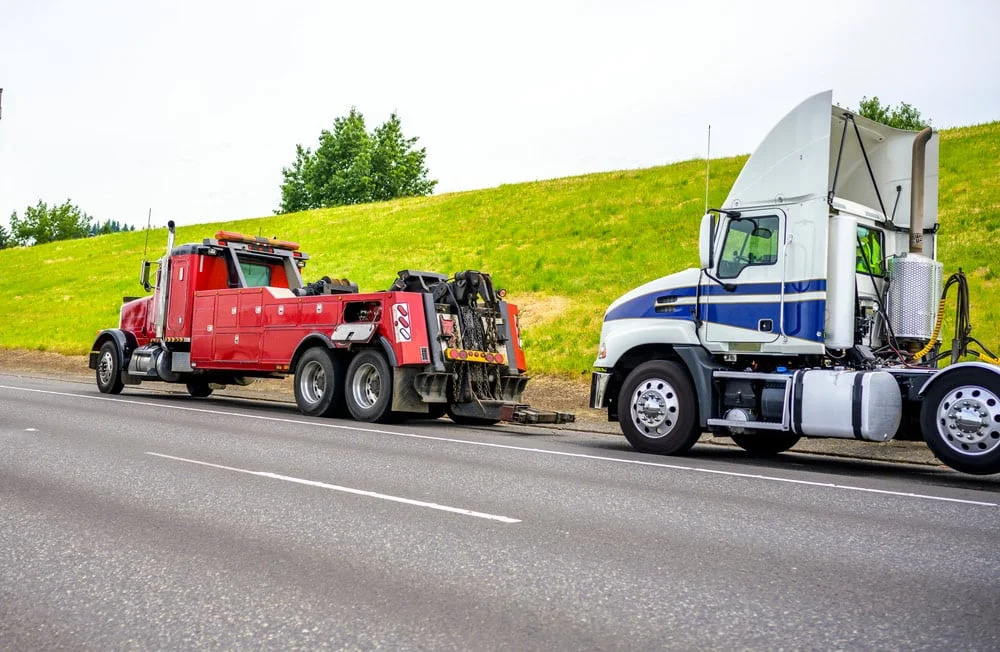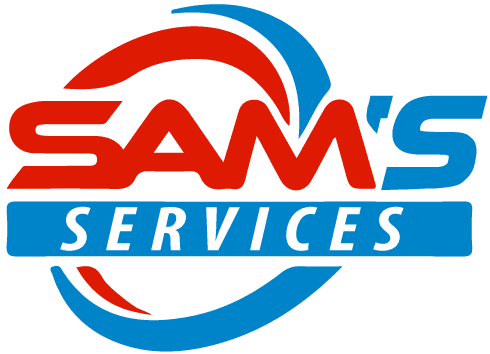
When it comes to heavy duty towing safety tips, experience, equipment, and quick thinking matter — but safety is what truly keeps drivers, cargo, and equipment protected on the road. Whether you’re hauling a disabled semi-truck, transporting a loaded trailer, or responding to an emergency breakdown, proper safety protocols can make the difference between a successful tow and a costly accident.
At Sam’s Services, we’ve handled countless complex recovery operations across Houston, from roadside breakdowns to heavy-duty recoveries. Over the years, we’ve learned that following proven safety procedures isn’t just about compliance — it’s about preventing injuries, avoiding damage, and ensuring every towing job is completed without unnecessary risk.
In this guide, we’ll cover the top 10 heavy duty towing safety tips every truck driver and operator should know before hitting the road.
1. Inspect and Maintain Equipment Before Every Tow
Before any towing operation begins, thorough equipment inspection is non-negotiable. Check tow chains, cables, winches, and hydraulic systems for wear or damage. Ensure your truck’s brakes, lights, and signals are fully functional.
This step isn’t just about avoiding mechanical failure — it’s about preventing dangerous situations. For example, a worn tow chain could snap under heavy load, causing serious damage or injury. Regular inspections are part of the essential safety culture at Sam’s Services, and they should be part of yours, too.
2. Know the Weight and Capacity Limits
One of the most important heavy duty towing safety tips is to understand weight ratings — both for the tow truck and the vehicle being hauled. Overloading can lead to loss of control, brake failure, or catastrophic mechanical damage.
Check the Gross Vehicle Weight Rating (GVWR) and ensure your equipment is rated for the job. If the vehicle is too large, consider calling a specialist. Our Heavy-Duty Semi Truck Towing Guide explains how different towing capacities are matched to specific truck types.
3. Secure the Load Properly
Improperly secured vehicles are a leading cause of towing-related accidents. Always use the correct type of chains, straps, and safety hooks — and double-check that the towed vehicle is balanced and stable before moving.
During roadside recoveries, especially with loaded trailers, our team often uses secondary tie-downs for extra stability. You can learn more about the right towing setups in our guide on The Best Heavy Duty Towing Truck Models.
4. Plan the Route Ahead of Time
A towing operation is not just about hooking up and driving away — route planning plays a major role in safety. Low bridges, tight turns, steep grades, and traffic-heavy roads can turn a standard tow into a hazardous situation.
Use GPS systems designed for commercial trucking and plan your route before departure. If you need roadside help and a safe recovery route, our 24/7 Heavy Duty Towing Service is ready to dispatch quickly anywhere in Houston.
Roadside Support You Can Count On
No matter the situation, our reliable roadside assistance ensures you get the help you need, fast. From breakdowns to emergencies, we’re here 24/7 to keep you moving.
5. Communicate Clearly and Consistently
Clear communication between drivers, dispatchers, and roadside teams is essential for safety. Misunderstandings can lead to delays, unsafe hook-ups, or even accidents on busy highways.
At Sam’s Services, our operators use radio communication and live GPS tracking to coordinate every step — and we recommend the same approach for fleets and independent drivers.
6. Use Proper Lighting and Visibility Equipment
Visibility is a critical factor in towing safety, especially at night or during roadside recoveries. Always use hazard lights, warning triangles, reflective vests, and beacon lights to alert passing traffic.
Drivers should also be mindful of weather conditions — rain, fog, and darkness require additional caution. Our Roadside Assistance team is equipped with advanced lighting gear for safe, visible operations even in low-visibility conditions.
7. Master Safe Driving Techniques with a Towed Load
Towing a heavy load changes how a truck handles — stopping distances increase, turning radius widens, and acceleration slows. Practicing defensive driving techniques is one of the most overlooked heavy duty towing safety tips.
Maintain safe following distances, avoid sudden braking or swerving, and take turns wide and slow. If possible, practice with an empty load before towing heavy cargo or trailers.
8. Be Prepared for Roadside Emergencies
Even with perfect planning, breakdowns and emergencies can still happen. Carry essential emergency gear — flares, cones, fire extinguishers, and a first-aid kit — and know how to use them.
If a breakdown occurs, call for professional help immediately. Our Towing and Recovery team responds 24/7 and is equipped to handle even the most challenging roadside incidents safely and efficiently.
9. Understand Medium vs. Heavy Duty Towing Requirements
Not every job requires the same type of tow truck. Sometimes, a medium-duty solution is enough — other times, you’ll need a fully equipped heavy-duty wrecker. Understanding the differences ensures you don’t over- or under-estimate your needs.
Our guide on Medium Duty Towing vs Heavy Duty Towing breaks down the key distinctions so you can make informed decisions and avoid costly mistakes.
10. Always Work with Certified Professionals
The most critical safety tip is knowing when to call the pros. Certified heavy-duty towing specialists have the training, experience, and equipment to handle complex recoveries without risking further damage or injury.
At Sam’s Services, we employ certified operators who adhere to industry best practices and safety standards — ensuring that every tow is handled correctly from start to finish.
Final Thoughts: Safety Is Non-Negotiable
The towing industry moves fast, but safety should never be rushed. By following these heavy duty towing safety tips, drivers and fleet managers can dramatically reduce the risk of accidents, injuries, and costly downtime.
Whether you’re dealing with a roadside breakdown, recovering a disabled semi, or hauling a heavy trailer across Houston, the right safety practices — combined with professional support — will keep your operations running smoothly.
If you’re ever in need of expert help, trust the team at Sam’s Services for reliable, 24/7 towing, recovery, and roadside solutions that put safety first.
FAQs: Heavy Duty Towing Safety Tips
Routine inspections ensure that all towing gear — like winches, cables, and hooks — is in safe working order. Identifying wear and tear early helps prevent equipment failure during a job.
Exceeding capacity can cause severe mechanical strain, brake failure, and loss of control. It’s a major safety hazard that risks both the tow truck and the vehicle being towed.
Yes. Always use high-visibility gear, reflective signage, and additional lighting. Reduced visibility makes communication and proper signaling even more crucial at night.
Proper load securing is key. Use heavy-duty straps and chains rated for the load weight, and always double-check balance and anchor points before departure.
Certified professionals have specialized training, advanced tools, and experience handling complex towing scenarios. This ensures safe, efficient recovery and minimizes risk of damage.



